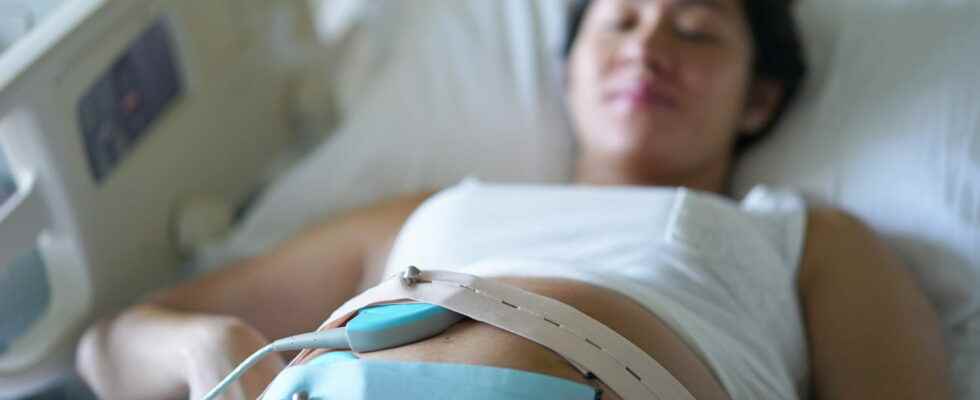Monitoring is a medical examination that monitors the contractions, but also the baby’s heart activity. In what cases is monitoring used? How to interpret the results? Here’s everything you need to know about monitoring.
The pregnant woman may have to do several monitoring during her pregnancy, but also during childbirth. We are talking more specifically about fetal monitoring, since it focuses largely on the health of the future baby. It’s a medical exam painless and helpful, which is usually performed by a doctor, gynecologist or midwife. What exactly is monitoring for? Why do you have to make one? How does it work ? How long is the exam ? We answer you.
What is monitoring, what is it for?
Monitoring is a medical examination specific to pregnancy, which is also useful during childbirth. The benefit of monitoring is twofold: it goes both measure the intensity of contractionsbut also monitor baby’s heartbeat.
Why monitor during pregnancy?
Monitoring is a precious control tool during pregnancy if the situation requires it. This is particularly the case if a dysfunction of the placenta has been detected, if the baby is stunted or moves less, but also if the future mother suffers from gestational diabetes or hypertension. Another scenario that requires the establishment of regular monitoring 1 to 3 times a week: the threat of premature delivery. In these situations, monitoring makes it possible to detect an anomaly or suffering in the future baby, or simply to check that everything is fine.
From when to do a monitoring?
Apart from special circumstances, mothers-to-be generally make a monitoring on the day of their delivery. While maternity units have different procedures, women who present with contractions and are in labor are quickly placed in the labor room and placed under monitoring.
Where to do pregnancy monitoring?
Monitoring review can be performed in a doctor’s office or maternity. If the mother-to-be is not hospitalized, the examination can also be done at home by a health professional, or by the mother-to-be if she has a device.
How long does a monitoring last?
On average, when it comes to control, the monitoring lasts about thirty minutes. But in the working period, it is often left longer, continuously.
The monitoring works thanks to an electronic device, a cardiotocograph, which is equipped with two sensors. The first is an ultrasonic sensor Doppler, who go measure baby’s heart rate and that is coated with gel before placing it on the mother’s belly, holding it with a strap. The second, called tocometer, is placed on the belly, at the level of the anterior surface of the uterine fundus, to highlight the contractions. These, even when they are painless, are detected by the device. Monitoring is therefore a very good tool for indicate the imminence of the birth. Two parallel lines will then appear on a roll of paper which comes out at the rate of 1 cm per minute. The midwife or the doctor will observe it regularly to ensure that the baby is supporting the contractions well and does not show any abnormal heart rhythm.
What does Toco mean on monitoring?
When reading, it is not uncommon to see writes “Toco” on a monitor. This term “Toco” refers to the tocometer sensor, which is part of the cardiotocograph device and which records the intensity of uterine contractions. The strength of the contractions is indicated by a number between 20 and 100 and visible on the monitoring screen.
Several elements indicate whether the monitoring is good. On the monitoring diagram that is printed, we observe the oscillations. The top ones show baby’s heart rate. The normal rhythm should be around 120-160 bpm (beats per minute). The tracing varies with heart rate. At the bottom, we find the curve of the contractions of the future mother, which are symbolized by regular peaks when contractions occur. Note that the precise reading of a monitoring and its curves requires the expertise of a professional. Do not hesitate to ask your questions to your practitioner to find out more.
Is monitoring mandatory?
Monitoring is not a mandatory examination, but on the other hand it is very useful during pregnancy and especially when labor begins.
